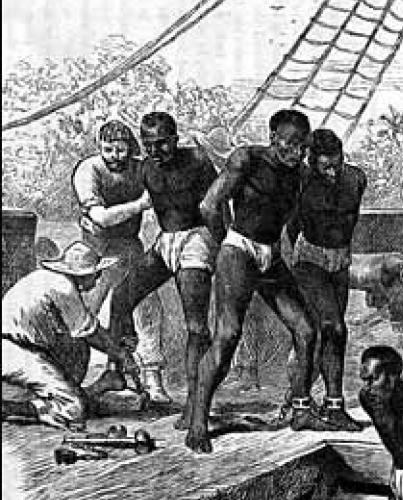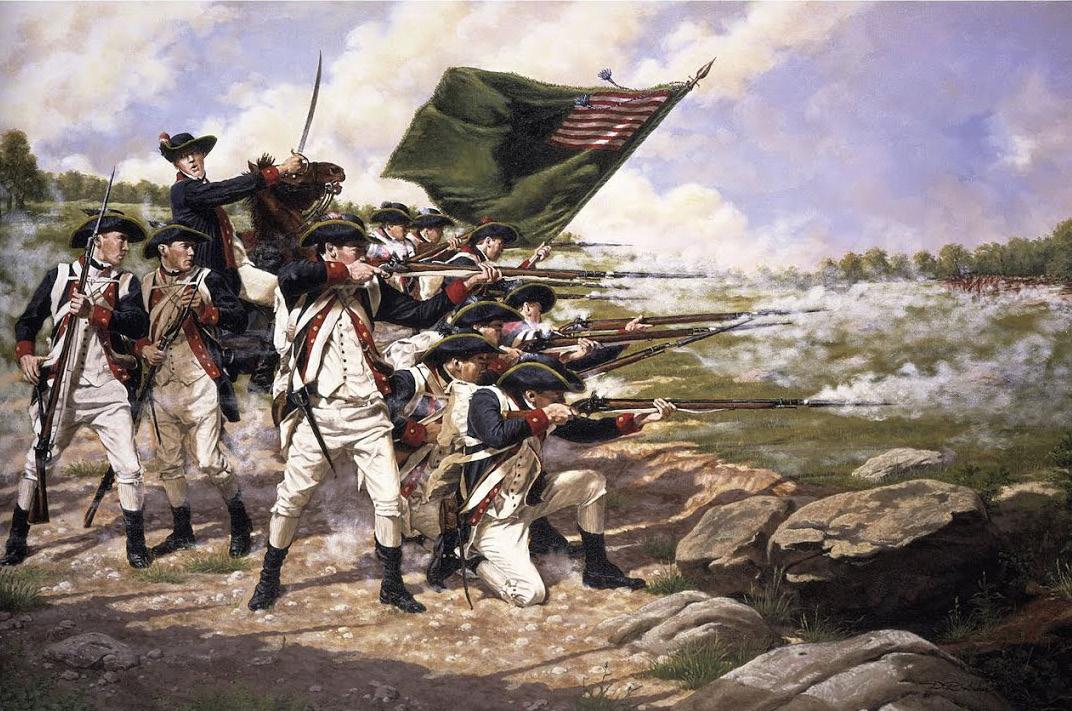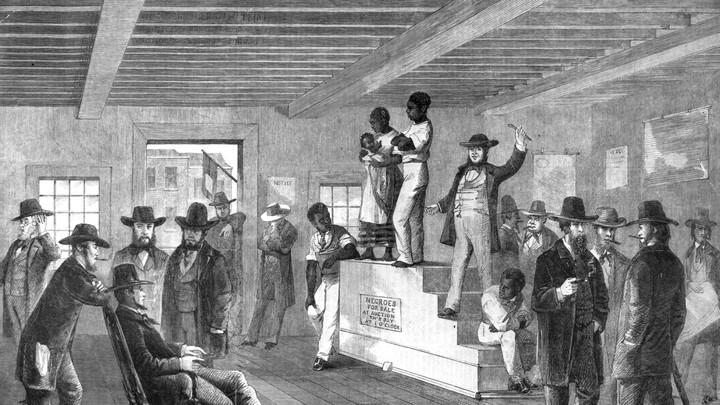
15 minute read
you hunt for your house using mobile Let’s explore in detail the 1619 project
Let’s explore in detail THE 1619 PROJECT
We’ve all heard about the Emancipation proclamation and the 13th amendment and quite a number of Americans now are familiar with the story behind it. Well, the 4th of July is a date that forever will remain instilled in our hearts for as long as we live in this country, or maybe, let’s look at the 1st of February, a day when President Truman urged all Americans to observe diligently and reflect on the price of freedom bought for this country. By now, I am quite sure that you see the trend of what I’m writing about, if not, read on.
Advertisement
The year 1619 is not a year notable to most Americans and although in the recent past, these numbers have been said and recited over and over again, you’d be surprised, that even now, people still don’t have a clue what is going on. Those people who do know what the year stands for, are mostly a very tiny segment of those “who can tell you that 1776 is the year of our nation’s birth, or is it?” Were historians wrong?
The 1619 Project is a project that has received a lot of criticism and even though these critics are yet to obstruct the project’s success, giants in the conservative world are beginning to forge a tactical and strategic response that might outflank the true purpose of the project; reframing the country’s history.
In August 1619, a ship arrived at Point Comfort in the British colony of Virginia, in the cargo barrels it had around 20 to 30 enslaved Africans. Their arrival marked the start of a barbaric system of chattel slavery. A system that would inflict hardship on the poor and innocent Africans rooted in their homes for the next 250 years. And so the story begins.

Basically, the 1619 project was initiated by The New York Times Magazine in 2019 with the goal of re-examining
Let’s explore in detail THE 1619 PROJECT
the legacy of slavery in the United States and timed for the 400th anniversary of the first Africans in Virginia. The project entails a series of essays about slavery, subjugation and racial issues. Indeed, the story needs to be rewritten because slavery and racial bigotry have tainted every fabric of America’s founding and development to this date. The project contains 18 essays, a collection of original stories and poems, photo essays, a five-episode podcast, as well as other elements. To support educators on the field, the

Pulitzer Center has provided free reading guides, copies of magazines and lesson plans.

Out of forced slavery, and the radical anti-black racism that it required, American grew what it prides itself in, the prowess in its economic might, its industrial power, its electoral system, dietary, music, poetry and art, the inequities infringed on poor souls in public health and education, its income inequality and not to forget the ‘lead by example’ philosophy that is set for the world to emulate, as a land for freedom and equality. All these effects, still are very much alive and felt to this day. The seeds of all that were planted long before the “founders” formally declared independence from Britain. It is time to recognize that when Africans set foot in this country, that marked the birth of America.

When the New York Times published the 1619 project in August, people lined up on the streets in New York to get the copies and since then, this move seems to only be growing stronger
with new materials like podcasts, a high school curriculum, and an upcoming book. According to Nikole Hannah-Jones, the reporter who conceived the project, the response has been so gratifying.
“They had not seen this type of demand for a print product of The New York Times, they said, since 2008, when people wanted copies of Obama’s historic presidency edition,” HannahJones told me. “I know when I talk to people, they have said that they feel like they are understanding the architecture of their country in a way that they had not.”
Schools and any other institution of learning in America has taught history from the perspective of the founders of the nation, who are often glorified as either heroic or tragic figures in a global struggle for human freedom, but The 1619 project seeks to change the narrative by establishing “the consequences of slavery and the contributions of black Americans at the very center of our national narrative.” if we ignore the norm and look at history through the lens of those who have been denied the rights enumerated in America’s founding documents, the story takes a whole new direction.
And just like any other disruptive projects, the 1619 project has come under intense heat. The fact is, not everyone received it enthusiastically. A few months ago, a Historian from Princeton, Sean Wilentz- you may have heard about him because he has been so vocal when it comes to open negative criticism of the project, even at one time terming it as “cynicism” in a lecture in November last year- began to silently disseminate letters objecting to the project, and in particular some of Hannah-Jones’s work. The letter has since then acquired four signatories from James McPherson, Gordon Wood, Victoria Bynum, and John Oakes, all leading scholars in the field. The letter was sent to top New York times editors and to publisher A.G Sulzberger. The Times presented an “unbalanced, onesided account” said James McPherson, dean of Civil War historians. “So wrong in so many ways” describes Gordon Wood, a historian of the American Revolution, all referencing the New York Times’s 1619 project. A September essay for the World Socialist Web Site dubbed the 1619 project as a “racialist falsification” of history. That never got the attention that was speculated, but what did were the interviews with Gordon Wood and James McPherson in November. “I wish my books would have this kind of reaction,” Mr. Wood says in an email. “It still strikes me as amazing why the NY Times would put its authority behind a project that has such weak scholarly support.” McPherson continues to describe that there have never been any good white people, which ultimately ignores white radicals and even liberals who have supported racial equality.

Tweeting in response, Nikole Hannah-Jones is proud of her project, saying that it “decenters whiteness” and disdains its critics as “old, white male historians.” About McPherson, she says “Who considers him preeminent? I don’t.” Nikole has an undergraduate degree in History and AfricanAmerican studies and a master’s in Journalism. She argues that the 1619 project goes way beyond McPherson’s expertise, the Civil war. In other words, ‘Back off James!’

To the Trotskyists, Nikol writes, “You all have truly revealed yourselves for the anti-black folks you really are.” calling them hypocritical white men “claiming to be socialists.” a point that seems to be supported by Harvey Klehr, a leading historian of American Communism, he writes that the Trotskyists’ faction called the Workers League until 1995 was “one of the most strident and rigid Marxist groups in America” during the Cold War.
This is a battle that’s only getting started, soldiers on every side are strapping their boots
for what’s to come. Thomas Mackaman - one of the World Socialist Web Site’s interviewer and a history professor at King’s College says, “Ours is not a patriotic, flag-waving kind of perspective,” he continues to add that the arrival of the 20 or so slaves in Jamestown VA in 1619 wasn’t a “world-altering event.” Slavery at that time was no big news, to America, yes but to the rest of the world, it was the norm. There were already slaves elsewhere in what would become the U.S. before 1619.
Thomas continues to argue that even if the NY Times wants to make slavery the central story of American History, it has it backward. The American Revolution did not form the basis of “Slavocracy” as Ms. Hannah-Jones puts it, instead, according to Thomas, the American Revolution brought slavery in for “questioning in a way that had never been done before” by “raising universal human equality as a fundamental principle.”


Ms. Hannah-Jones insists that the anti-black racism, segregation, and subjugation runs deeps in this country’s DNA. countering that statement, Mr. Mackaman calls it “anti-historical.” proving that it requires her to belittle the most progressive declaration of modern history: “that all men are created equal.” But, none of that convinces Nikole, calling it a big fat “lie” and claims that the drafters didn’t even believe it. The abolitionists disagreed, and so did Martin Luther King Jr who say it as a “promissory note.”
Mr. Mackaman protests Nikole’s “cherry-picking” of quotes that presents Lincoln as, in his words “gardenvariety racist.” he says that her misrepresentation of facts about Lincoln can only be attributed to her “totally racialist interpretation.” He says if the whites and blacks are supposed to be “diametrically opposed to each other, then you have to disregard all the history that runs contrary to that—and there’s an awful lot.”
Back to the letter by Sean Wilentz, it reads “We applaud all efforts to address the foundational centrality of slavery and racism to our history,” but then divagates into harsh
criticism of the project. It refers to “matters of verifiable fact” that “cannot be described as interpretation or ‘framing’” and says the project reflected “a displacement of historical understanding by ideology.” The letter didn’t just dispute the NY Times position in defending the 1619 project but also demanded corrections.
Normally, a letter to the editors or the publisher might not seem that significant, but given the stature of the historians involved, it draws a serious challenge to the credibility of the project. Nevertheless, some historians declined to sign the letter wondered whether the letter’s intention was to resolve factual disputes than to discredit laymen who had challenged an interpretation of the American National identity that’s cherished by liberals and conservatives.
“I think had any of the scholars who signed the letter contacted me or contacted the Times with concerns [before sending the letter], we would’ve taken those concerns very seriously,” HannahJones said. “And instead there was kind of a campaign to kind of get people to sign on to a letter that was attempting really to discredit the entire project without having had a conversation.”
The underlying principles forming the basis of each disagreement presented in the letter is not just a matter of historical fact, but conflict about whether the American people, from the founders to modern-day people are really committed to the ideals they claim to revere. While some of the claims and critiques presented can be answered using historical facts, some others are based on a person’s interpretation, grounded in perspective and experience.
The letter has also had some far-reaching consequences, in as much as the essays from historians and other contributors to the project goes. It may obscure the extent to which its authors and the creators of the 1619 project share a broad historical vision. Two sides with varied historical opinion, one side agreeing that 54 l
slavery’s legacy still shapes American life. If you think this is true, then you are in agreement with the force catapulting the 1619 project.


This mind conflict between the NY Times authors and their historian critics represent a fundamental disagreement over the trajectory of the American society, which is where Nikole and Mr.Mackaman clash on whether America was founded on slavocracy. The letter by the historians is rooted in a vision of American history as a slow, uncertain march towards a more perfect union. The introductory essay by Ms. HannahJones presents a darker, shady vision of America, in which

the people have made less progress then they think, and a society where African Americans continue to struggle indefinitely for the rights they may never fully realize.
The Atlantic writes, “Inherent in that vision is a kind of pessimism, not about black struggle but about the sincerity and viability of white anti-racism. It is a harsh verdict, and one of the reasons the 1619 Project has provoked pointed criticism alongside praise.”
This is a project that will revolutionize the way Americans see things. We can’t argue with the fact that in every institution that holds the fabric of this country, there lie great contributions of the African Americans. America couldn’t be where it is were it not for the Black people. Such a project needs to be embraced, rather than fighting it.
In conjunction with the Pulitzer Center, the

NY Times has already begun writing and spreading curriculum to the public schools with the aim of reframing the country’s history by demonstrating that 1619 was the year America was founded. Despite the criticism from renowned historians, the project seems to gain a lot of traction.


To preach this gospel, we have to go back to the roots. Most Americans learn very little about the lives of the enslaved, or how the struggle over slavery shaped this country. In fact, last year, the Southern Poverty Law Center found that only a few American high-school students know that slavery was the cause of the Civil War and the constitution protected slavery without directly mentioning it, or that ending slavery required a constitutional amendment.
“The biggest obstacle to teaching slavery effectively in America is the deep, abiding American need to conceive of and understand our history as ‘progress,’ as the story of a people and a nation that always sought the improvement of mankind, the advancement of liberty and justice, the broadening of pursuits of happiness for all,” the Yale historian David Blight wrote in the introduction to the report. “While there are many real threads to this story—about immigration, about our creeds and ideologies, and about race and emancipation and civil rights, there is also the broad, untidy underside.”
The materials produced at Pulitzer are intended to enhance the traditional curricula, not to replace them as most historians see it. “It’s being used as supplementary material for teaching American history.”
The 1619 project asks the readers to consider what it would mean to regard the year 1619 as the country’s birth year. The issue includes
essays from Princeton historian Kevin Kruse, who bases his arguments in the consequence of the segregation and the white flight. Jamelle Bouie, who postulated that American countermajoritarianism was shaped by the pro-slavery politicians who sought to preserve the peculiar institution. We also have Linda Villarosa who has done a remarkable job tracing racist stereotypes about higher pain tolerance in African Americans from the 18 century to the present day.
This project was the dream child of Nikole, who wrote the flagship essay in which she argues, “Our democracy’s founding ideals were false when they were written. Black Americans have fought to make them true.” she also has shared some fundamental restructuring of the society that must include some form of financial reparations because “It’s not enough to simply have political power if you don’t have economic power.”
The 1619 project is Fantastic
The historians who have criticized the project to some extent agree with the project, for instance, Wilentz says that the rallying idea behind 1619 project is urgently needed. “The idea of bringing to light not only scholarship but all sorts of things that have to do with the centrality of slavery and of racism to American history is a wonderful idea.” In an interview, he says that “Far from an attempt to discredit the 1619 Project, our letter is intended to help it.” But you would wonder if that was the intention, wouldn’t it make sense to first approach Ms. Hannah-Jones before sending it to the publishers?
In just seven months, the project has had a successful start. The demand for the print edition of the NT Times magazine is higher than all others since President Obama’s 2008 victory edition. According to Pulitzer’s Annual Report, they have successfully brought the 1619 curriculum to 3500 classrooms around the country. “Educators from hundreds of schools and administrators from six school districts have also reached out to the Center for class sets of the magazine.” The report notes.

Pulitzer Center denotes that the 1619 project does not shallowly look to infiltrate the history classes, it goes beyond that, the true intention as far as education goes, is to reframe the way students see a vast array of topics from economics, to health care, traffic and music; The 1619 Project tackles the subject of enslavement in a way that will be new to many American students. Scholars, reporters, and poets examine the legacy of slavery as it manifests in our present day, from the brutality of U.S. capitalism to the spread of sugar in diets around the world.
John Murawski of Real Clear Investigations says that five public school systems, including Chicago and Washington D.C, have already adopted the 1619 Project’s companion district-wide. John says that there is an “administrative fiat” in that unlike the normal textbooks that have to undergo a vetting process, the 1619 curriculum is not being vetted, but it’s in circulation and being implemented. The 1619 project curriculum is meant to be supplemental, however in January, the school district of Buffalo, New York adopted it as mandatory for the Seventh through 12th graders.
All through history books, African Americans’ contributions have been misplaced and masked, but not anymore. With the 1619 project, the country’s history will be reshaped putting African Americans in the right place in the books of history. With this correction and the understanding of the importance Black people made to the making of this country, comes greater opportunities for everyone. Like Lincoln, I will end by saying that all men are created equal.
Sources: https://www.theatlantic.com/ideas/ archive/2019/12/historians-clash-1619- project/604093/ https://www.wsj.com/articles/the-1619- project-gets-schooled-11576540494 https://thefederalist.com/2020/02/11/ to-fight-the-1619-projects-lies-takethis-free-u-s-history-class/ https://pulitzercenter.org/lesson-plangrouping/1619-project-curriculum https://www.commonsense.org/ education/website/the-1619-project











